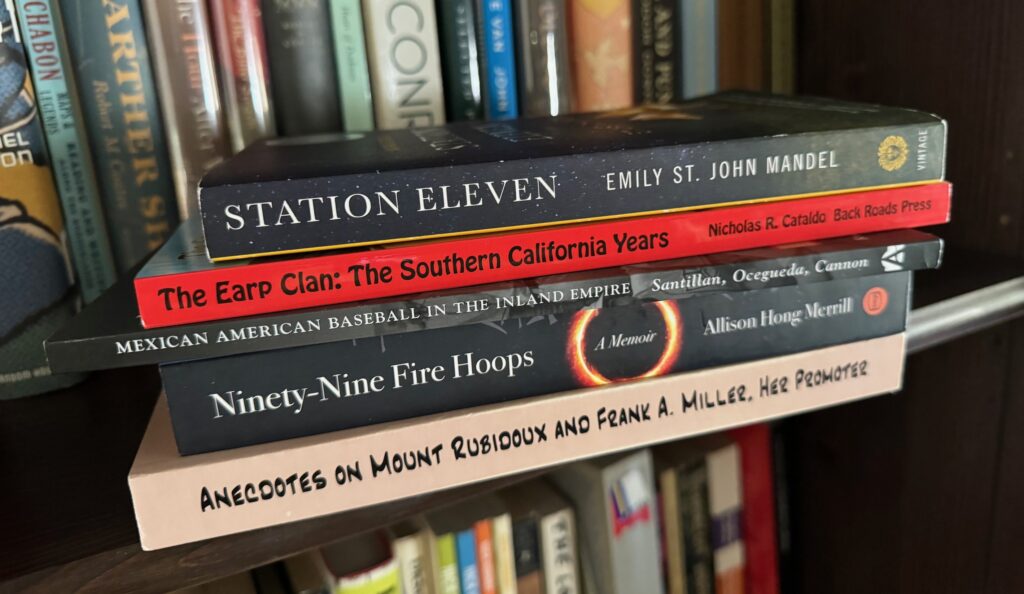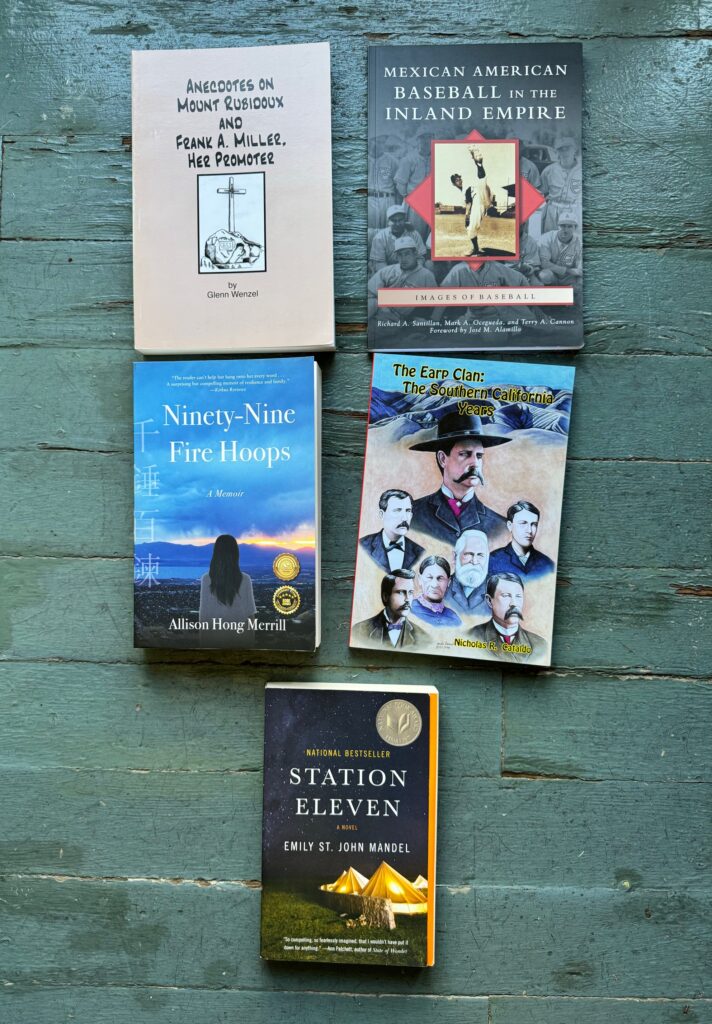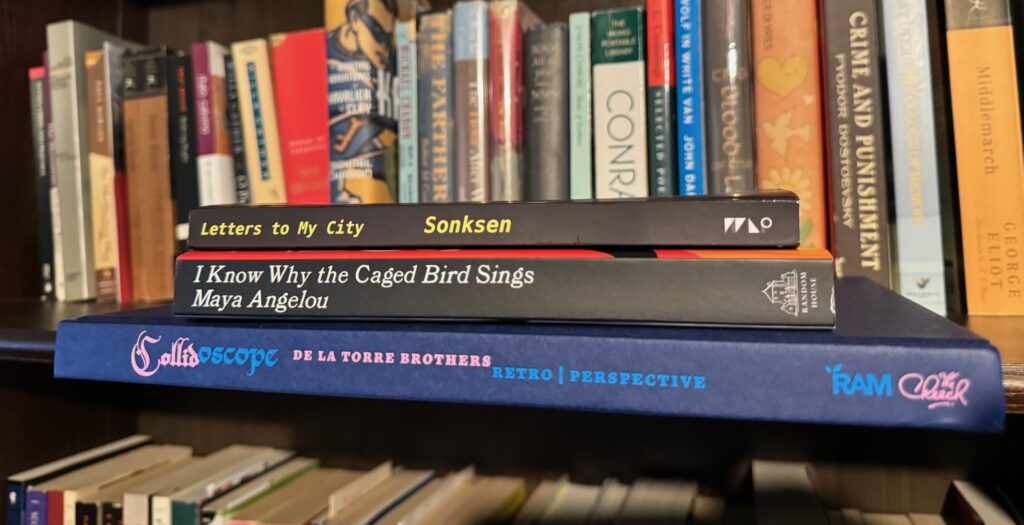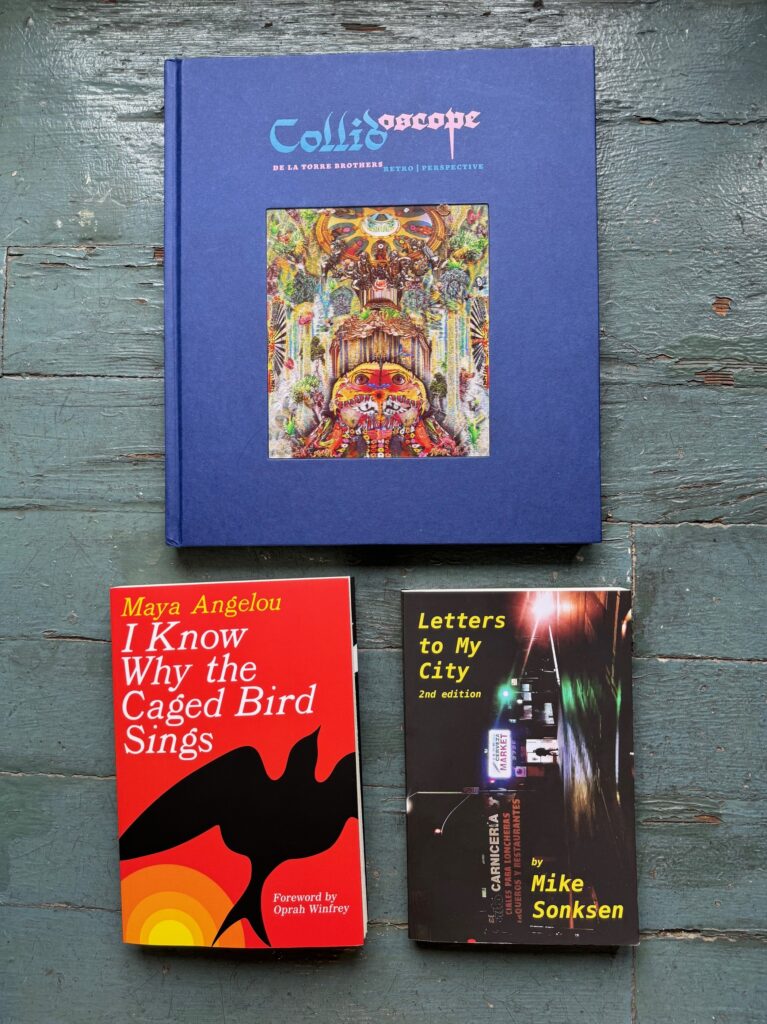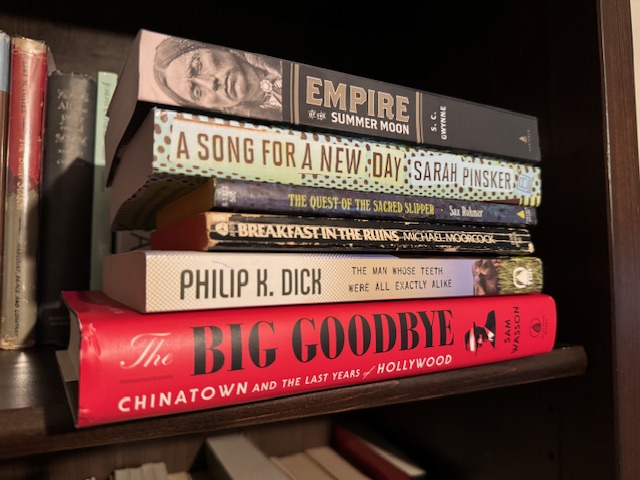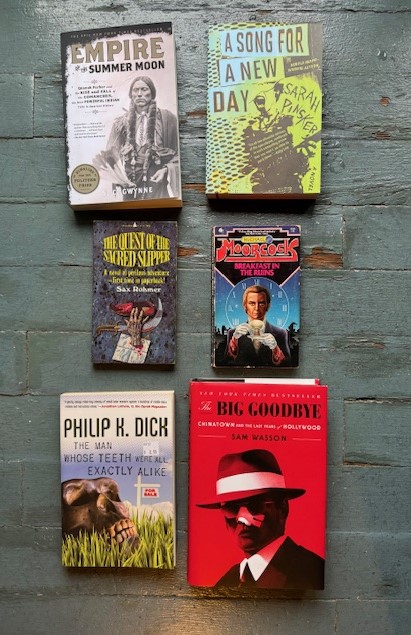Books acquired: “The Prisoner #3,” Hank Stine
Books read: “All That I’m Allowed,” Ellen Harper; “Through the Doors of the Mission Inn, Vols. 1 and 2,” Joan H. Hall; “On Juneteenth,” Annette Gordon-Reed; “The Switch,” Elmore Leonard; “Creating an Orange Utopia,” Patricia Ortlieb
Welcome to the midpoint of the year! I ended the first six months of 2024 at 29 books after reading six in June. Not bad. My six include three books on Riverside history, one book of U.S. history, one chapbook by a local author and, whew, one crime novel for flavor.
“All That I’m Allowed” (2024): A chapbook (60 pages long) of vignettes about a fictional and problematic dog joining a family headed by an indulgent mother and practical father. Very fond and funny and well-observed, and I’m not even a dog person. Most of the pieces end with a punchline. The book is decorated with whimsical drawings by Marguerite Millard. (Gift of the author.)
“Through the Doors of the Mission Inn” (1996): Short biographical sketches of 45 notable people who visited Riverside’s Mission Inn, most in the first half of the 20th century, including presidents, entertainers, political leaders, thinkers and eccentrics. Very well done. (Bought at Riverside’s Local History Book Fair in September 2022.)
“Through the Doors of the Mission Inn, Vol. 2” (2000): Like the first book, a collection of 40 short sketches of notables who visited, or stayed for extended periods at, Riverside’s Mission Inn. Among them: Carrie Nation, Susan B. Anthony, Will Rogers and Albert Einstein. Well done, but I do think the four-page pieces in the first book are a better length than this sequel’s five-page pieces. There’s just a bit more personal history for each visitor than seems necessary. Still well worth reading if you’re interested in Riverside. (Also bought at Riverside’s Local History Book Fair in September 2022.)
“On Juneteenth” (2021): A series of essay about the origins of Juneteenth in Texas, Texas’ history as a state where slavery was embedded into its constitution and Gordon-Reed’s personal and family history as a Black Texan. A slim book, intimate and powerful. Gordon-Reed is winner of a Pulitzer Prize for her book on the Hemings family and Thomas Jefferson. (Received free at a June 2023 talk at the Ontario Public Library about Biddy Mason. It was too late to read it for Juneteenth last year so I saved it for this June.)
“The Switch” (1978): A friend who knows I love Quentin Tarantino’s “Jackie Brown” loaned me his copy of “The Switch,” whose characters Ordell and Louis appear in the movie. It’s my first Leonard and I liked it. Not a lot happens, and only one scene could be considered “action.” But the story and dialogue are a pleasure, and it’s surprisingly, and positively, female-centered. Also, Louis is a lot smarter here than in Tarantino. (Loaned by a friend in May 2024.)
“Creating an Orange Utopia” (2011): This gathers the known facts about the woman (the author’s great-great-grandmother) who was an early suffragist and who successfully raised the first two navel orange trees in the U.S., creating a citrus boom in Southern California. There is not a tremendous amount of information about Eliza Tibbets, typical for women of her era. But this account is smoothly written, which is unusual for local history. (Bought at Riverside’s Local History Book Fair in September 2023.)
June was a month in which every book was solid, but none was outstanding. “On Juneteenth” may come closest.
Now, for something different. On my vacation home to Olney, Illinois, I met up in early June with Terri Shafer. I’ve known her since she was the assistant to my optometrist (she helped fit me for glasses for several years) and also was wife of the “young” teacher at my high school. (Every high school has a “young” teacher, right? The one closest in age to students?)
Terri is, as you must know, a faithful commenter on the Reading Log and a major reader. We got together to talk books and reading strategies. We are both, it turns out, inveterate list-makers with a lot of books and authors we hope to get to, soon and into the far future.
At my suggestion, we took a selfie while holding books we intended to finish by the end of June, i.e., for this Reading Log. I held up my end by finishing the Mission Inn book and we’ll learn in the comments if Terri completed “Tom Lake.” (I have little doubt she did.)
Looking back, I’m pretty satisfied with my reading the first half of the year. I’ve knocked off several of my oldest books as well as, in June in particular, some newer acquisitions. My bookcase with the most unread books was the one with Inland Empire and L.A.-related books, mostly nonfiction with some fiction. That’s because that’s the category I’m likeliest to add to. I’ve made a point this year of reducing that number and now it’s a more reasonable 14.
The next six months, I’ll read some, most or all of my remaining 11 pre-pandemic purchases. I may fall a couple short, due to the 1,000-page “Middlemarch,” a 600-page rock music anthology and a 500-page Riverside true-crime book being in that batch. Among the other remaining books are the final two Travis McGee novels and a tribute publication to their author, a book of Mark Twain travel writing, two science fiction story collections and two SF novels.
What did you read in June and how were your first six months of 2024? I’m looking forward to your comments, whether or not you read “Tom Lake.”
Next month: I finish “Swann’s Way” (probably).








